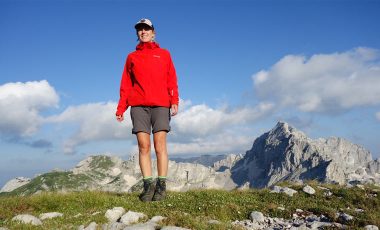There are a bunch of situations in life where we find ourselves reaching for clothes that we’d rather not wear, just to make sure we fit in with what’s expected. Weddings, job interviews, work etc. I truly admire those who manage to not let their wardrobes be dictated by what is socially acceptable. I can’t say I’m quite that brave! Being out in the wild, however, is one of the few occasions where it actually doesn’t matter at all what your clothes look like. But it REALLY matters how well your clothes perform. So long as they do a good job at keeping you comfortable whilst hiking, they’re in. (And if they happen to look great too, then you’ve totally nailed hiking clothes!)
- What to wear hiking in summer
- What to wear hiking in winter
- What to wear hiking in spring and fall
- Top tips for choosing hiking clothes
- What to look for when choosing hiking clothes
Disclaimer: We use affiliate links and may receive a small commission on purchases.
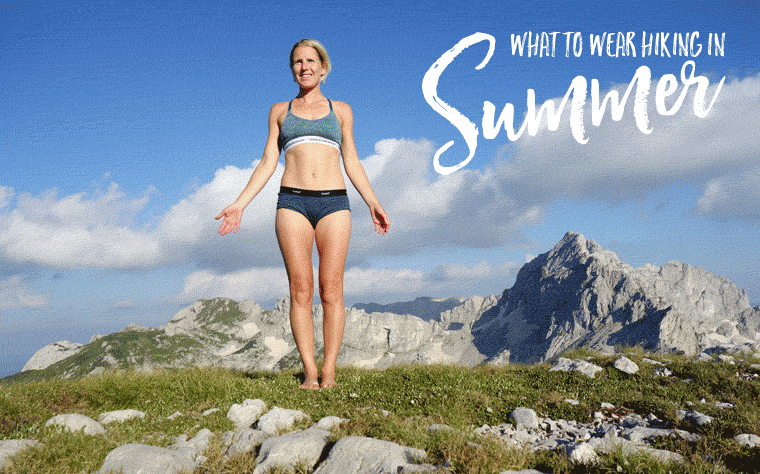
What to wear hiking in summer
Knowing what to wear hiking in hot weather can be trickier than you may first think. The main thing you’ll struggle with is keeping cool and sweat management. So your clothing should be good at moisture wicking with the ability to dry quickly.
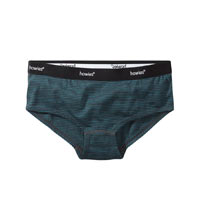
Underpants
Properties: Moisture wicking, quick drying, odor resistant, flat seams
Fabric: Merino, synthetic or Polygiene treated synthetic
What Joey wears: Howies Merino Boxhers
What Rob wears: Runderwear Merino Briefs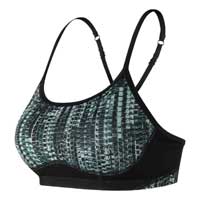
Sports bra
Properties: Moisture wicking, quick drying, odor resistant, flat seams
Fabric: Merino, synthetic or Polygiene treated synthetic
What Joey wears: New Balance Seamless Crop Top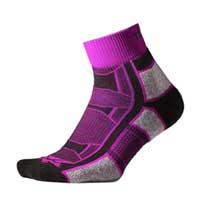
Light socks
Properties: Quick drying, moisture wicking, odor resistant
Fabric: Merino/synthetic blend, or Polygiene treated synthetic
What Joey wears: Cloudline Merino Light Cushion Socks
What Rob wears: Thorlos Outdoor Athlete Ankle Socks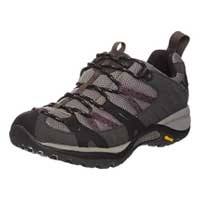
Hiking shoes
Properties: Breathable, waterproof, durable, lightweight
Fabric: Leather, synthetic or a mix of both
What Joey wears: Merrell Siren Sport
What Rob wears: The North Face Sakura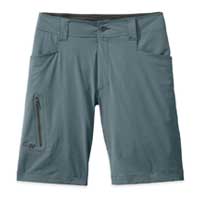
Shorts
Properties: Quick drying, moisture wicking,
Fabric: Synthetic
What Joey wears: Jack Wolfskin Hiking Shorts
What Rob wears: Outdoor Research Ferrosi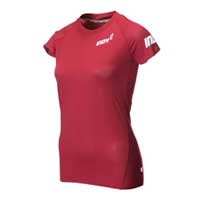
T-shirt or vest
Properties: Moisture wicking, odor resistant, quick drying
Fabric: Merino, synthetic or Polygiene treated synthetic
What Joey wears: Innov8 AT/C T-shirt with Polygiene
What Rob wears: Patagonia Capilene Lightweight T-shirt
Cap or hat
Properties: Moisture wicking, quick drying, UV resistant
Fabric: Synthetic with mesh
What Joey wears: Dakine Shoreline Trucker Hat
What Rob wears: All sorts!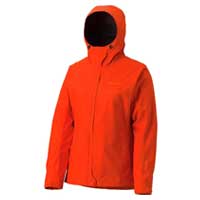
Waterproof jacket
Properties: Waterproof, windproof, breathable
Fabric: Synthetic with Gore-tex (or similar) membrane
What Joey wears: Marmot Gore-tex Minimalist
What Rob wears: Norrona Gore-tex Falketind

What to wear hiking in winter
Your underwear probably won’t be any different to summer choices. Although, I certainly favour big, cosy, ‘boxer-style’ undies for extra warmth during thw winter months.

Hiking socks
Properties: Warm, moisture wicking, odour resistant
Fabric: Merino/synthetic blend
What Joey wears: Bridgedale Wool Fusion Trekker
What Rob wears: Thorlos Outdoor Explorer
Boots
Properties: Insulating, waterproof, breathable
Fabric: Leather, synthetic or both, with a Gore-tex (or similar) membrane
What Joey wears: Meindl Bhutan Lady MFS
What Rob wears: Scarpa Gore-tex Delta
Base layer
Properties: Moisture wicking, odor resistant, quick drying
Fabric: Merino, synthetic or Polygiene treated synthetic
What Joey wears: Armadillo Merino Artemis
What Rob wears: Icebreaker Oasis Base Layer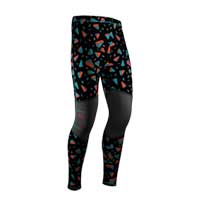
Long Johns or leggings
Properties: Moisture wicking, odor resistant, quick drying
Fabric: Merino, synthetic or Polygiene treated synthetic
What Joey wears: So Solid Tights
What Rob wears: Skins Compression Tights
Buff
Properties: Moisture wicking, odor resistant, quick drying
Fabric: Merino, polyester fleece or Polygiene treated synthetic
What Joey wears: Merino Buff
What Rob wears: Merino Buff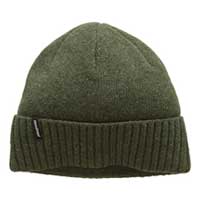
Beanie hat
Properties: Warm, moisture wicking, wind resistant
Fabric: Merino, wool, polyester fleece or synthetic
What Joey wears: Homemade hat — 100% wool
What Rob wears: Patagonia Brodeo Beanie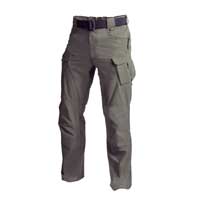
Hiking pants/Leggings
Properties: Windproof, water resistant, quick drying
Fabric: Synthetic with DWR (durable water resistant) coating
What Joey wears: Columbia Titan Peak Trekking Legging
What Rob wears: Helikon-Tex Outdoor Tactical Pants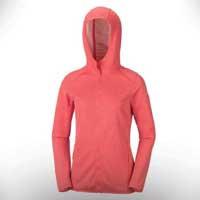
Midlayer
Properties: Insulating, moisture wicking
Fabric: Merino, polyester fleece
What Joey wears: Columbia Cabanon Creek Zip Hoodie
What Rob wears: Patagonia R1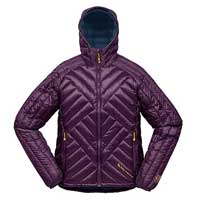
Insulated jacket
Properties: Insulating, compressible, lightweight
Fabric: Goose down or synthetic insulation
What Joey wears: Big Agnes Shovelhead
What Rob wears: Patagonia Nano Puff Hoody
Waterproof pants
Properties: Waterproof, windproof, breathable
Fabric: Synthetic with Gore-tex (or similar) membrane
What Joey wears: Patagonia Torrentshell Pants
What Rob wears: Patagonia Torrentshell Pants
Waterproof jacket
Properties: Waterproof, windproof, breathable
Fabric: Synthetic with Gore-tex (or similar) membrane
What Joey wears: Marmot Gore-tex Minimalist
What Rob wears: Norrona Gore-tex Falketind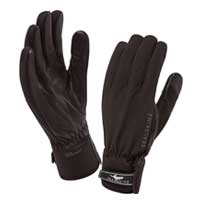
Gloves
Properties: Insulating, breathable, moisture wicking
Fabric: Goose down, merino or synthetic
What Joey wears: SealSkinz Waterproof Gloves
What Rob wears:The North Faces Apex Etip
What to wear hiking in spring and fall
Hiking in the shoulder seasons can become a little more tricky to plan for, depending on where you are hiking. It may be that you wear everything you would for summer hiking, and carry a few winter layers in your backpack. That way, you’re prepared for whatever the weather may throw at you.
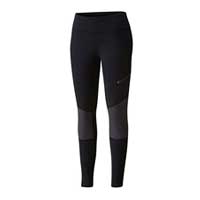
Leggings
One excellent addition to your hiking wardrobe during spring and fall is a pair of leggings. Hiking specific leggings offer warmth and breathability. They also make slipping a pair of waterproof pants on and off in rainy conditions much easier than when wearing hiking pants. I wear Columbia Titan Peak Trekking Leggings.
Top tips for choosing hiking clothes
- Avoid cotton at all costs. It holds moisture, is very heavy and uncomfortable when wet, and it takes ages to dry.
- Choose items that you love. If you feel great in them, you’ll wear them more.
- Try to avoid cheap clothing that won’t last. Ideally, each item should last you for years.
- Hiking clothes can be expensive, so seek out the sales!
- Spend on the essentials first (waterproof jacket, socks, footwear, baselayer).
- You can get away with wearing a few less technical items to start with (shorts, vest, midlayer, cap). Once you’ve got the funds, you can start investing in more technical versions of these items.
- If your hiking clothes get damaged, try to fix them before buying new. Alternatively, see what the clothing brands’ policy is on repair — get them to do it for you!
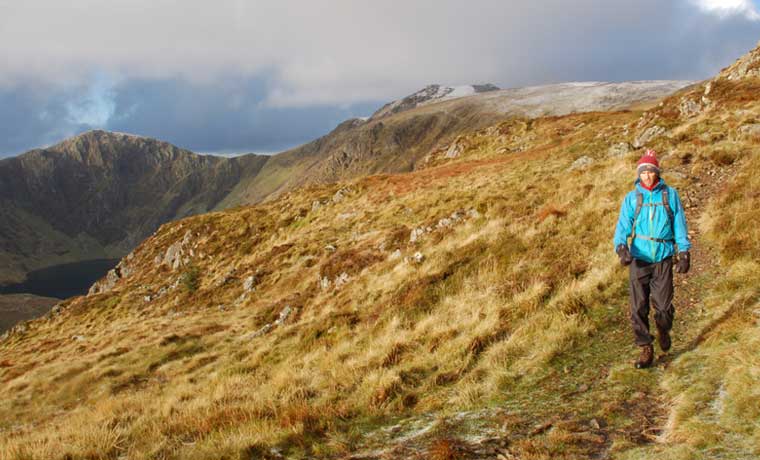
What to look for when choosing hiking clothes
The number one thing to consider when choosing hiking clothes is comfort. Easy right? Try it on. It feels great. Bingo!
Unfortunately choosing what to wear hiking isn’t quite as simple as that (although it’s a great place to start!)
The below factors will contribute to the overall comfort of your hiking clothes, whatever conditions you are hiking in. So when deciding what to wear hiking, be sure to check that each item is fit for purpose to be as comfortable as possible.
01The fit of your hiking clothes
You can get away with ill-fitting clothing in everyday life. But when hiking, even the smallest misfit can cause a lot of discomfort.
Generally speaking, your hiking clothes should be:
- Fitted but not tight — they shouldn’t cause any kind of restriction
- Not baggy — excess fabric can cause rubbing and chaffing
- The right length — pants that are too long can get super muddy and heavy, whilst tops that are too short create drafts through your midriff
- The right size — pants that are too big at the waist can ride up underneath your backpack
Get the fit right and you’re halfway there to a highly comfortable set of hiking clothes.
02Fabric properties of your hiking clothes
The fabric of your hiking clothes is the next most important thing to consider, once you’ve got the fit right. This is where things get a little more complex, so stick with me!
Each item of hiking clothing has a specific job to do, mostly determined by the fabric with which they are made.
Desirable properties of hiking clothes:
- Temperature control – keeping you cool when it’s hot or keeping your warm when it’s cold.
- Moisture wicking – moving moisture (sweat) away from your skin.
- Quick drying – moving moisture away from your clothing into the atmosphere — quickly!
- Odour control – preventing bacteria from growing on your clothes.
- Breathability – allows air and moisture vapour to move through the fabric.
- Waterproofing – stopping water from getting inside your clothing.
- Windproofing – preventing the wind from penetrating your clothing.
Each of the above jobs, when done properly, contribute to the overall comfort of your hiking clothes.
03Types of fabric for hiking clothes
Synthetic fabrics (polyester, nylon or blends)
Good at: Drying quickly, moisture wicking, not holding water
Bad at: Odour control, providing warmth when wetMerino wool
Good at: Moisture wicking, odour control, temperature regulation, providing warmth when wet, breathability
Bad at: Drying quickly, rinsing your bank account!Goose down
Good at: Keeping you really warm, packing down small, breathability
Bad at: Providing warmth when wet, waterproofing, drying quicklyPolyester fleece
Good at: Drying quickly, moisture wicking, not holding water
Bad at: Odour resistance
04Clothing technologies
Gore-tex
This is a brand of semi-permeable fabric. It is a waterproof and breathable membrane that is added to clothing or footwear, and repels water but allows air and water vapour (sweat) to move in and out.
Polygiene
Polygiene odour control technology prevents odour-causing bacteria from growing on your clothing. Fabric is treated with silver salt which has antimicrobial properties.
NOTE: Not every item needs to tick every box. For more details on what properties each item should ideally have, skip back to the sections on ‘what to wear hiking’ in summer, winter, and spring and fall.
Don’t be put off by the volume of technical hiking clothing on our list. We’ve been hiking for years and have accumulated stuff over time. The more you hike, the more you’ll realise what you do and don’t need, and what to wear hiking in different conditions and seasons.
Whatever hiking clothes you do end up wearing, make sure they’re comfortable from the moment you put them on to the moment you take them off.
Happy hiking!


